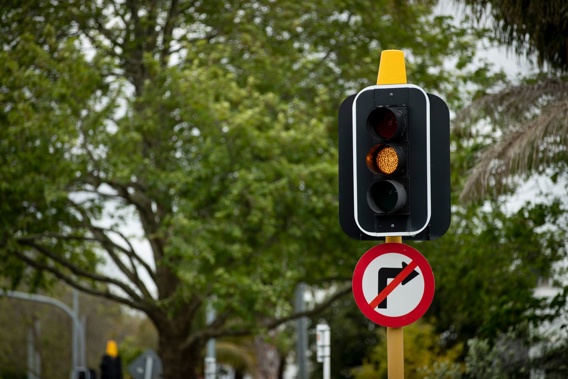
The country will remain at the orange Covid traffic light setting - with a "second wave" of Omicron infections expected over winter among the reasons for caution, the Government says.
New Zealand has been at the orange alert level since 11.59pm at April 13.
The next review of the settings will be in late June, Covid-19 Response Minister Chris Hipkins said today.
A rise in Omicron cases was expected over winter.
Hipkins said the orange setting remained appropriate for managing the Covid outbreak.
The arrival of new strains of cold and flus were another reason to remain cautious.
"While daily cases numbers have flattened nationally, they are again beginning to increase in the Northern region and hospitalisation rates have also increased slightly over the past month. In addition, our latest COVID-19 modelling indicates that under current conditions, there is a likelihood of a secondary wave of cases appearing," said Hipkins.
Hipkins said that at orange protection from the virus could be managed while ensuring businesses can continue to operate.
He urged Kiwis to continue being cautious and to think about the health of others - particularly those who were immunocompromised or at risk of long-term health impacts.
"Self-isolation, vaccination and mask wearing continue to be our main defences against Covid-19. People will continue to be required to wear a face mask in many indoor settings," he said.
"It is encouraging to see case numbers remain steady, but there are other factors at play that tell us to remain cautious and not yet move to green."
Illnesses such as the flu were expected to add to the workload of hospitals that were already busy, Hipkins said.
In the orange setting there are no limits on indoor and outdoor gatherings and businesses are not required to display QR code posters (although some can still choose to do so).
New Zealand's Covid response has been managed under the traffic light system since midnight on 2 December 2021, when the old alert level system which had been in force since March 2020 was replaced.
The system, known officially as the Covid-19 Protection Framework, was designed to replace lockdowns with a set of tiered restrictions designed to keep pressure on our health system at a manageable level.
New Zealand moved into a red setting on January 23 this year, when community transmission of the Omicron variant was detected.
That red setting was revised as part of a suite of changes in late March that included lifting the restriction of the numbers allowed at outdoor gatherings, raising the indoor gathering limit from 100 to 200 and making changes to Covid tracing and vaccine mandates.
At 11.59pm on April 13, New Zealand moved to an orange traffic light setting and masking requirements were relaxed for schools.
Yesterday the Ministry of Health announced there were 6000 new cases in the community and a further nine Covid-related deaths were reported.
There were 363 people in hospital with the virus, including 14 in intensive care.
The seven-day rolling average increased ever so slightly - yesterday it was 7712 and last Monday it was 7702.
University of Otago epidemiologist Professor Michael Baker said that a move to the green traffic light setting, where there are no restrictions, "seemed inconceivable" at this time.
The Omicron outbreak has unfolded largely as expected, with a peak firstly in Auckland and then the rest of the country, followed by a flattening of case numbers which have then crept up in the last month.
Health officials are anticipating a winter peak of up to nearly 2600 hospital beds taken up by Covid, RSV, flu and other respiratory illnesses.
The winter peak is based on modelling that director general of health Dr Ashley Bloomfield revealed recently.
He presented two scenarios. The lower-transmission one peaked at 500 Covid cases in hospital in September. The higher-transmission one peaked at just shy of 1300 hospitalisations in mid-August.
The review comes as the new updated My Vaccine Pass officially becomes available today.
People who are up-to-date with their Covid vaccinations will be able to download a new-look My Vaccine Pass that authorities are still encouraging, despite it no longer being a legal requirement.
Health MInister Chris Hipkins said at the time of the announcement of the new app that there may still be some places where the passes will be required.
"We've learned over the last couple of years there are no certainties with Covid-19 and with new variants circling the globe, it's best we're prepared for every eventuality."
Meanwhile, the Government has set aside nearly half a billion dollars for purchasing and rolling out another dose of the Covid-19 vaccine, and other Covid-19 treatments next year.
Budget documents published on Thursday include an estimate of $284.3 million for implementing the Covid-19 immunisation strategy, and a further $189.2m for the purchase of "additional Covid-19 vaccines from mRNA suppliers" in 2022 and 2023.
The money has been set aside for a possible fourth dose, if one is required, however Covid-19 Minister Chris Hipkins' office confirmed on Monday that a decision to roll out a fourth dose had not yet been made.
Take your Radio, Podcasts and Music with you









